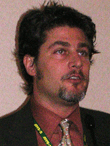Lyophilization Experts Show How to Avoid Common Formulation Mistakes
When it comes to developing a robust lyophilization process, formulators can "pay now or pay later," says Jeff Schwegman, PhD, founder and chief scientific officer for BioConvergence. Because 30% of new drugs in clinical trials are biotech-based therapeutics (compared with 7% 10 years ago), more than ever, the US Food and Drug Administration is paying close attention to lyophilization data and questioning pharmaceutical companies about their development cycles, especially cycle development transfer, shelf-temperature mapping, dryer-to-dryer comparison studies, formulation time, process validation, and cycle deviation. Consequently, this is pushing formulators to optimize formulation variables, conduct additional testing during early-stage development, and understanding critical process parameters, equipment qualifications, and manufacturing conditions that can influence formulation behavior at a large scale. Not taking the time or effort to achieve these goals during early development could lead to redundancies in formulation work - a reality observed too often in today's practices.

When it comes to developing a robust lyophilization process, formulators can "pay now or pay later," says Jeff Schwegman, PhD, founder and chief scientific officer for BioConvergence(pictured left). Because 30% of new drugs in clinical trials are biotech-based therapeutics (compared with 7% 10 years ago), more than ever, the US Food and Drug Administration is paying close attention to lyophilization data and questioning pharmaceutical companies about their development cycles, especially cycle development transfer, shelf-temperature mapping, dryer-to-dryer comparison studies, formulation time, process validation, and cycle deviation. Consequently, this is pushing formulators to optimize formulation variables, conduct additional testing during early-stage development, and understand critical process parameters, equipment qualifications, and manufacturing conditions that can influence formulation behavior at a large scale. Not taking the time or effort to achieve these goals during early development could lead to redundancies in formulation work - a reality observed too often in today's practices.
During the AAPS presentation, Physiochemical Characterization to Support Lyophilization Cycle Development and Scale-Up, Schwegman focused on how proper physiocharacterization can be used to diagnose common problems such as loss of potency, collapse, and meltback. For example, differential scanning calorimetry and freeze-drying microscopy are valuable tools to determine whether a substance is crystalline, amorphous, or a combination of both; whether a formulation will require annealing; and what the annealing conditions should be based on warming curves and specific glass-transition and eutectic temperatures. Such curves can be useful to avoid mistakes such as unintended crystallization of the product and vial breakage.
Formulation variables also must be optimized to achieve good product stability during freeze drying and subsequent storage of lyophilized biopharmaceuticals. For example, one mistake formulators often make, says Byeong Chang, PhD, founder of Integrity Biosolution, LLC is not taking time-dependent factors into consideration when determining degradation rates. Often, formulators try to optimize the process by focusing on the data at only one accelerated temperature condition (eg, at 40 degrees), without conducting tests to see how the degradation can change over a temperature range.
Knowing what is going on in the environment of the lyophilizer, especially by conducting tests at various points in the chamber, and clearly understanding manufacturing objectives is another essential for avoiding common mistakes, says Edward Trappler, president and founder of Lyophilization Technology. "The product dictates the process," said Trappler, as he presented several "checklists" for understanding key product attributes, including equipment qualification and capacity. Equally important, said Trappler, is identifying technology transfer aspects such as attributes of the active pharmaceutical ingredient, batch size and uniformity, and process reproducibility.
Participants in the symposium were:

Moderator: J. Jeff Schwegman, PhD, BioConvergence
Characterization of Biopharmaceutical Formulations for Lyophilization,
Byeong S. Chang, PhD,
Integrity Biosolution, LLC
Scale-Up Strategies for Lyophilized Products Based on Empirical Data
Edward H. Trappler,
Lyophilization Technology
Drug Solutions Podcast: A Closer Look at mRNA in Oncology and Vaccines
April 30th 2024In this episode fo the Drug Solutions Podcast, etherna’s vice-president of Technology and Innovation, Stefaan De Koker, discusses the merits and challenges of using mRNA as the foundation for therapeutics in oncology as well as for vaccines.